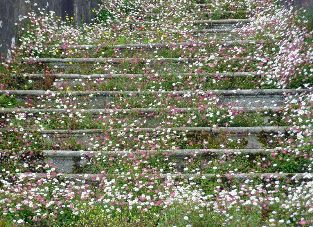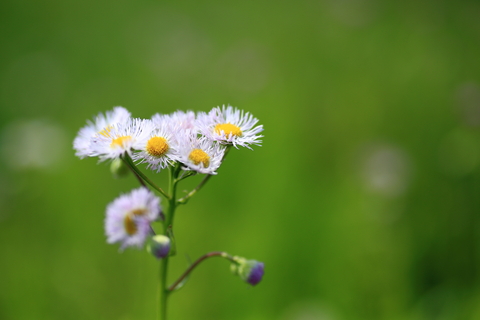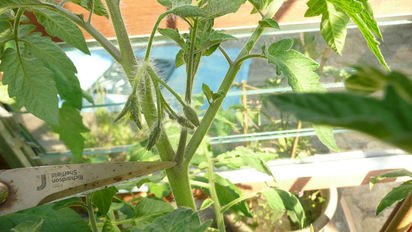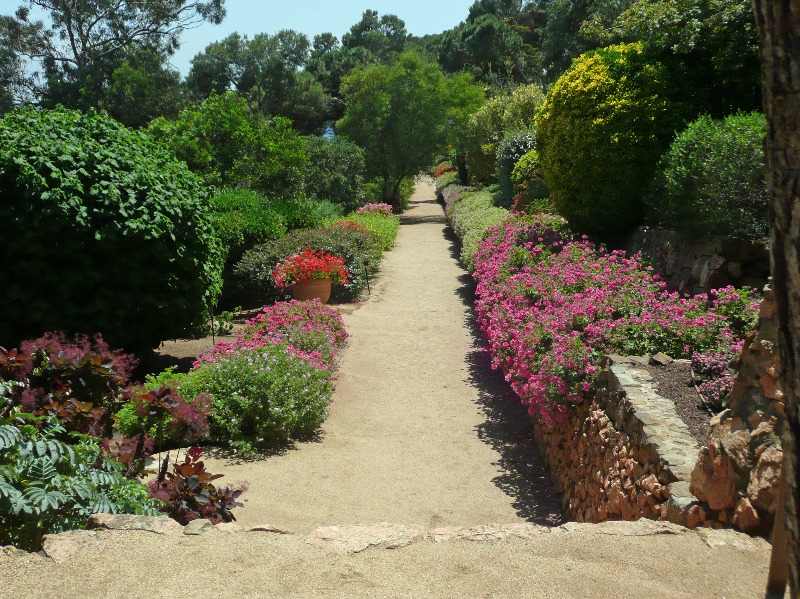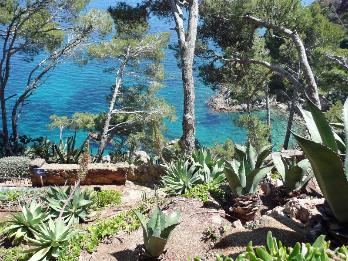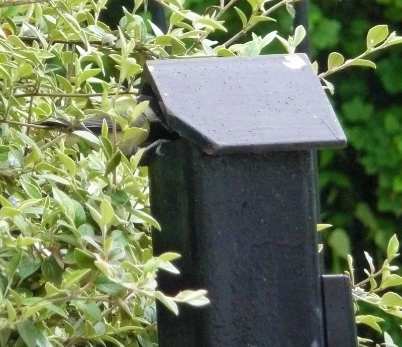|
It's a great treat to find a botanical garden abroad to view plants growing in a different climate. In our cold climate, we view Pelargoniums as summer plants best utilised for bedding. In fact Pelargoniums are part of a large Genus of over 200 species and in warmer climates they are found growing all the year round in flower borders. In the Uk we commonly call them Geraniums, but are not related to hardy geraniums. The image left shows a long walk of Pelargoniums in the Jardins de Cap Roig, which is situated on the North East Spanish coast, an unspoilt part of Costa Brava.
When visiting a garden in the UK, this type of walk is often a herbaceous border full of summer colour. In this Spainish garden, the walk was all Pelargoniums and many of them scented leaved varieties which when touched smell of menthol, peppermint, lemon sherbet, and nutmeg. They looked and smelt fantastic and the climate certainly brings out the best judged by the image middle left. In the UK it would not be possible to grow a Pelargonium to such as size and maturity outside.
But Pelargoniums are not just bedding plants for the summer. True, they will not survive outside but they are one of the best conservatory plants because they tolerate the heat very well. When left growing in a conservatory they often do get quite large and mature and are very forgiving plants.
The zonal and scented leaves grow best in a conservatory, as the ivy leaved variety have a tendency to succumb to thrips and other glass house problems because they get just too hot and dry. In the shelter of a conservatory, a Pelargonium will thrive for several years and grow to a good sized mature plant.
Pelargoniums will tolerate being cut back quite radically and will re grow and are very easy to take from cuttings which means you can have a continual supply of new plants for the conservatory and to plant out for bedding. There is such a wide range and different types available from specialist, massed together in a conservatory or porch they look lovely. Even if we cannot grow them to good size outside, we can bring a bit of spain inside. If you are looking for plants to lighten up your conservatory which will tolerate heat and neglect, Pelargoniums are well worth trying.
The Jardins de Cap Roig are spectacular, on the edge of the coast with over 1000 species. When I visited the garden was immaculate in labelling and presentation being maintained to a very high standard. There are some fantastic plants to see not least a trailing rosemary hedge, a collection of hydrangea, Strelitzia, and lavender in abundance. The views of the coast present as a dramatic backdrop and throughout the garden there are interesting sculptures. Well worth a visit if you are in that part of Spain.
|
